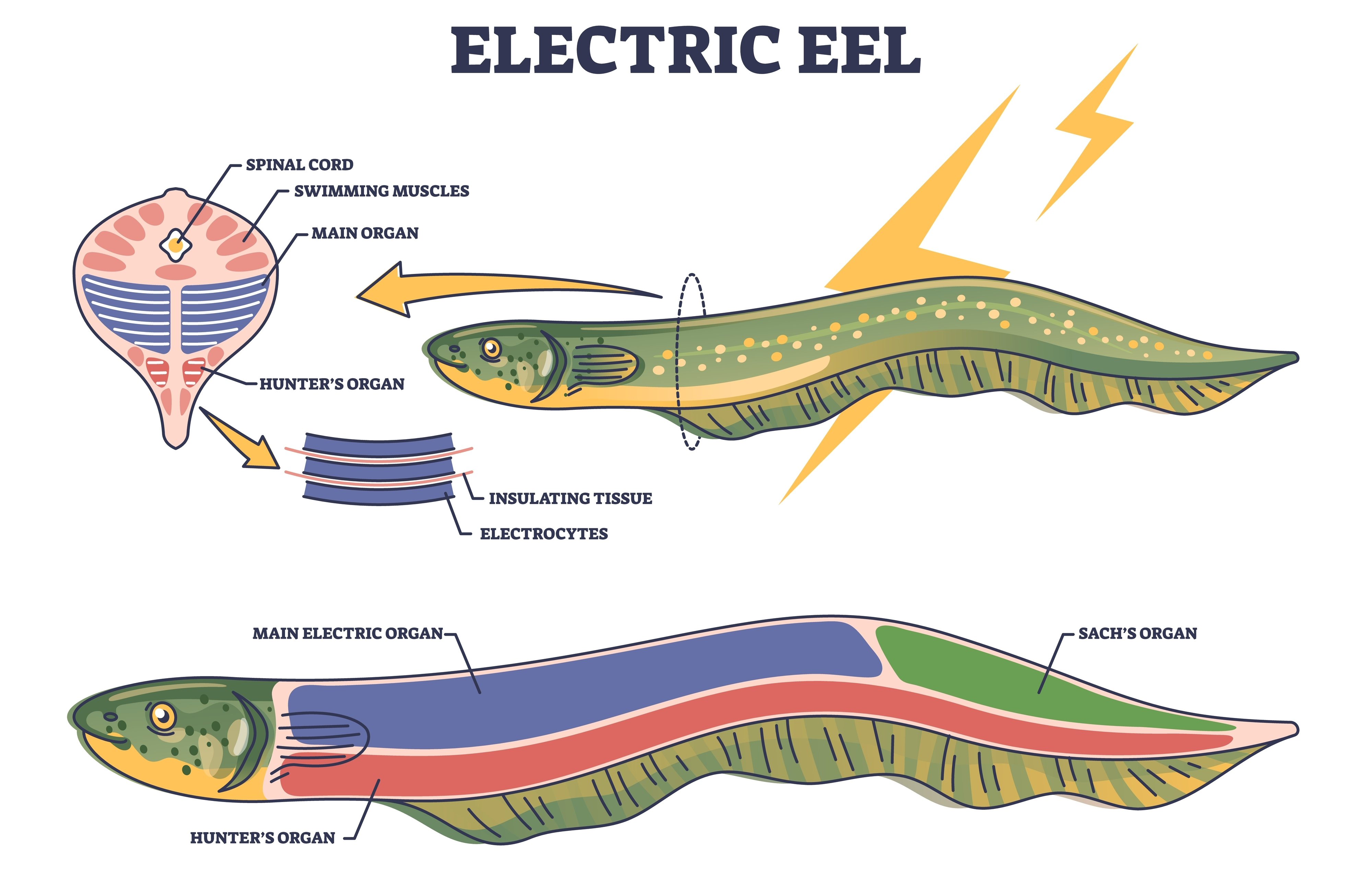Just when you thought eels couldn’t get any weirder, we’ve got shocking news. It turns out electric eels’ ability to generate enough electricity to “light” a Christmas tree isn’t the only thing that makes electric eels slippery freaks – once you take a look at their anatomy, they make even less sense.
There are three species of electric eel that make up the genus Electrophorus. Located in South America’s Amazon and Orinoco rivers and their tributaries, the electric eel (Electrophorus electricus), Vari’s electric eel (E. varii), and Volta’s electric eel (E. voltai) are the world’s strongest bioelectric generators with between 480 and 860 volts coming from the different species.
Closely related to catfish and carp, the three “eels” in this genus are actually knifefishes and aren’t true eels at all. Knifefish differ from true eels – like the moray eel and Japanese eel – for example by their ability to breathe air. That’s right, despite having tiny gills that are only used to eliminate carbon dioxide, these fish get oxygen by using their big ol mouths to breathe gulps of air from the water’s surface.
Electric eel anatomy
Even from the outside, these guys are weird-looking. Completely scaleless with grey-brown skin, electric eels can grow up to around 2.4 meters (8 feet) long and weigh as much as 22 kilograms (48.5 pounds). With Volta’s electric eels having been observed generating 860 volts of electricity, they have the ability to cause some serious damage to those unlucky enough to be on the receiving end.
With poor vision and inhabiting muddy pools and rivers, electric eels rely on low-level electrical pulses to communicate and navigate their environment using sensitive pores in their head and body.
Identifying a true eel from one of these electric imposters can be done by observing the dorsal fin. True eels have a long dorsal fin that runs down the length of their upper body, while false eels have no dorsal fin at all. What electric eels do have though, hints at the peculiarities lurking within.
While true eels have a continuous dorsal, anal, and caudal fin that runs down the lower body, starting around halfway or on the lower third; electric eel’s anal fin runs from just below the head right down the entirety of the body. This is because the electric eel’s anus is where its “neck” appears to be.
In fact, basically all of the electric eel’s main organs sit just below its head, with the rest of its staggering length being where it generates all its electricity. That means 80 percent of an electric eel’s body is dedicated to the three organs it uses to generate an electric charge, leaving just 20 percent for all its vital organs and its hefty head.

The internal workings of the electric eel’s shocking “tail”.
Image credit: VectorMine / Shutterstock.com
How they generate electricity
Electric eels are equipped with three specialized organs that allow them to generate electricity – the main organ, the Hunter’s organ, and the Sach’s organ – which are all made up of modified muscle cells. These organs house around 6,000 electrocytes, which are specialized cells that can release electric charges in unison when the eel is hunting or defending itself.
Attacking prey in a whip-like motion, the majority of the electrical charge comes from the main organ and the Hunter’s organ, which run down the length of the tail. Sach’s organ, located at the end of the tail, produces the lower-voltage pulses used in navigation and communication.
“Electric eels are like living batteries,” explains Dr Rupert Collins, Senior Curator of Fishes at the Natural History Museum, London. “They have stacks of modified muscle cells called electrocytes that have both a positive and a negative side. When the cells are triggered, it discharges an electrical impulse into the surrounding water.”
While scientists don’t know exactly how electric eels avoid shocking themselves, they believe that the short pulses, lasting only around 2 milliseconds, and the absorption from the surrounding water may diminish the effects of their strong electrical charges.
So, electric eels are mouth-breathing, 2-meter-long living batteries that poop out of their “neck”, produce enough electricity to potentially kill a human if they wanted to, can lay 1,700 eggs at a time, and aren’t even eels. Good luck sleeping tonight.
Source Link: Electric Eels Are 80 Percent Dedicated To Electricity And Poop From Their “Necks”